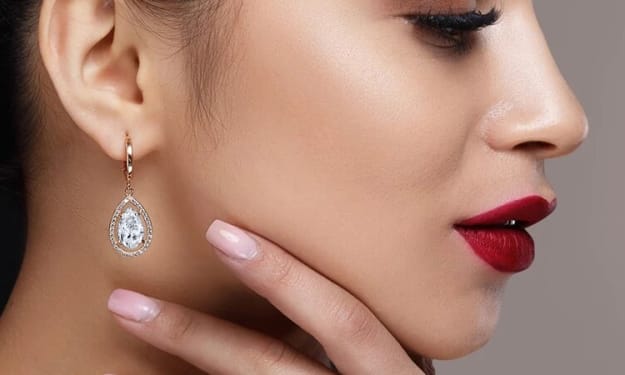How to Tell Whether Your Peridot is Real?
How to Determine if Your Peridot is Real

Peridot captures the hearts of all who lay their eyes on it with its brilliance and mesmerizing appearance. It is not your ordinary green gemstone! It is famous for its enchanting shades of green, which range from pure green to yellowish and olive green, that sets it apart from other stones. No wonder why it is a sought-after gemstone choice for jewelry pieces! However, everything that comes with a pro also has a con, and so does Peridot gems. It can be daunting to tell apart a genuine Peridot from an artificial one, given the ubiquity of fake peridots available in the market.
So, how can you overcome this problem? That's where this article comes to the rescue! Here are a few tips that can help you distinguish a real Peridot from a counterfeit. But before we get on with it, let's learn a little something about Peridot!
Peridot Gemstone
Peridot is a gem variety of forsterite, which is a member of the mineral group of olivine. It gets its stunning green hue from the presence of iron in the mineral olivine. This gemstone offers a beautiful spectrum of hues, from dazzling and bright yellow-green to deep olive green. Additionally, Peridot is the modern August birthstone and rates 6.5 to 7 on the Mohs scale of hardness.
Let us now take a look at these tips that can help us identify genuine Peridot gemstones and steer clear of counterfeits.
The Color Test
Peridots are distinguished by their vivid olive-green hue with a subtle undertone of yellow or, at times, brown. No matter the lighting under which you place this stone, the shade will not change. However, it isn't the same case for the replicated ones, which are usually made of plastic, glass, or quartz, as they might exhibit varied colors under different lighting.

So, if you are buying a loose Peridot stone or a piece of jewelry, Peridot Earrings, for instance, place the stone under natural light and then under lamp light. If you observe any change in its shade, the jewel is probably a counterfeit.
Look for Inclusions
Most peridots are clear and devoid of imperfections that can be seen with the naked eye. These inclusions are only visible when you observe these stones under magnification. Additionally, peridots with no flaws or inclusions are incredibly rare and challenging to find.
The quickest way to determine whether a Peridot is real or artificial is to examine its surface. An excellent indicator that your gemstone is authentic is if it has minute cracks or other obvious inclusions. That is because fake Peridot stone sellers usually conceal any inclusions or imperfections to give the gemstone an appealing look and market their product.
Examine the Facets
Another way to determine the genuineness of a Peridot is by carefully inspecting its facets. Since real Peridots are highly-prized, they are generally cut precisely and with care. However, counterfeit ones usually have uneven edges and cuts and are of poor quality.
The Refraction Test
Using a magnifying glass, examine the Peridot stone while placing it under a light source. Observe its hue as well as internal structure. Genuine Peridots exhibit double refraction, meaning the light that comes in splits into two rays. An artificial Peridot, on the other hand, will only show one light beam.
Where Can I Find Real Peridot Gemstones?
It is crucial to choose a trustworthy source when buying Peridot. Given the reputation they uphold, notable and well-established jewelers strive to offer their customers genuine and high-quality peridots.

Wrapping Up
Now that you know how to distinguish a real peridot from a fake one, you are one step closer to getting yourself a Peridot gemstone. Take the next step by visiting GemsNY, a trusted and reliable source of gemstone jewelry. You can find loose Peridot as well as jewelry, including Peridot rings, earrings, pendants, and more!





Comments
There are no comments for this story
Be the first to respond and start the conversation.